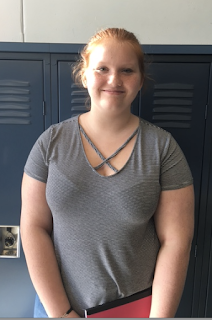My PBL journey began many years ago and has been very difficult but totally worth it....
17 years ago, I read an article about PBL that peaked my interest and then spent nine more trying to find anything I could about this practice but without much luck. That luck changed when I spent a summer at Georgetown for my James Madison Fellowship. The first person I met was Cathy Alderman who teaches American History at Anderson New Tech High School in Redding, California. We got to know each other and after a couple of weeks, I casually mentioned I wanted to use PBL. She responded that was all she used. A year later, I travelled to California to observe her class and judge if PBL was for me.
I saw students who were independent, yet worked cooperatively, used critical thinking, and acquired problem solving skills. The process of a project was important, but students were also learning history as well as working on today’s issues. I was going to use Project Based Learning no matter what, but now I had to find a way to get more training.
That opportunity came in the summer of 2014. I searched long and wide for a place to get additional training. I came into contact with Bob Abrams who at the time was working for an organization called Economic Opportunities through Education by 2015 (EcO15), a workforce development/education initiative, funded by the Lilly Endowment, that operated in 10 SE Indiana counties. According to Bob, "the initiative embraced PBL as an effective model for supporting students to success at tough STEM subjects". After talking to Bob, I decided the closest and best option was the PBL Academy at Jac-Cen-Del High School in Osgood, Indiana. My school was willing to pay for my registration fee, but I had to pay for my transportation and lodging. After being trained by excellent teachers like Andrew Larson from CSA New Tech in Columbus, I was ready to try my first unit. I ran it that fall. The unit was on Immigration in my American History class. It went well, but I needed to revise it so I went back to Indiana the following summer for additional training and have been going back to the PBL Open Workshop every summer since. I have also added a unit on democracy (I won an award the first year I taught this!) and will be using a media unit later this year as well.
 |
| Me accepting the Strengthening Democracy award from my Community Partner (Nebraskans for Civic Reform) for the work on my Democracy Unit. |
What has made my transition to PBL difficult? Besides the money/travel I mentioned earlier, I am the only one in my school to use it. There are not really any cross curricular opportunities because of that. My administration accepts me doing this but is not overly supportive. Because of this, converting to a total PBL culture in my class has been difficult. I also coach two sports, lead an annual trip to Washington D.C. and help with its fundraisers, and am working on Nebraska’s civic improvement initiative. So having the time available to plan and run a total PBL conversion has not been an option.
I don’t want to sound like I am complaining because I am not. It has been a difficult transition, and I will continue to teach PBL and convert more units until I use PBL “wall to wall.” For anyone that is struggling with the decision to convert or to continue using PBL, stay strong. You can do it. Is it hard? Yes. Is it worth the struggle? Absolutely! When I feel tired or think it would be easier to go back to a more traditional model, I always come back to what this country needs from education at this moment and going forward…cooperative learners, critical thinkers, and problem solvers. The best option to develop these kinds of students is Project Based Learning.
Cory Vasek is a 7th and 8th grade history teacher at Mary Our Queen school in Omaha, and has been teaching for 22 years. He has been implementing PBL since 2014.













